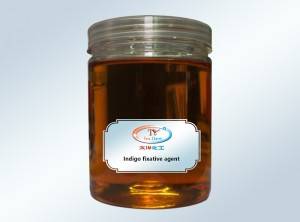1. Ordinary indirect dyes (N), such as dark green NB, dark brown NM, etc. Ordinary indirect dyes originally used benzidine as the two-head body, which has now been banned, and now uses aniline as the two-head body instead.
2. Blended indirect dye (D), it can not only dye T/C, T/R and other blended interlaces with disperse dyes in one bath and two steps, but also has complete chromatogram and good color fastness. Due to the introduction of cyanuric acid group in the dye, the molecular structure is enlarged, so its color fastness is definitely better than
Well, it is commonly used for dyeing cellulosic fiber textiles.
3. Light-fast indirect dyes, also known as Sirius dyes. This dye has a light fastness of 4 or above at a depth of 1/1 specification, and it is mostly used for dyeing light colors.

When fixing the color, pay attention to the following items:
1. The dyed fabrics treated with fixing agent must be cleaned adequately. Especially the dyed fabrics of turquoise blue, purple red, scarlet, dark brown, navy blue and dark green, etc., not only need to be washed abundantly after dyeing, but also need to be removed by a dehydrator. Sometimes after drying, the semi-finished product is inspected for no dyeing defects, and the fixing treatment must be stopped, otherwise the color fastness will tend to decline. Due to the large amount of dyes on the fabric, if the color is not fixed in time, dye migration will occur and defects such as streaking will occur.
2. The water hardness of the color fixing bath should be controlled within 100mg/kg, and special attention should be paid to the excessive performance of heavy metal ions. If the water quality is too high, it will add the cohesive effect of the fixation bath and weaken the fixation effect.
3. Acetic acid must be added when fixing. Acetic acid has the effect of preventing the accumulation of cationic substances. At the same time, it is also a co-solvent of cationic substances, which helps the fixing agent to dissolve adequately and make the fixation even.
4. Fixing conditions: bath ratio 1:10, 40℃ with fixing agent 2%-4% (owf), depending on the color depth, plus 1mL/L of acetic acid, disposal for 20-30min, out of the tank, no washing with water , Stop drying, but not too dry dehydration, that is, open width drying. The fixing agent can also be added in the rolling trough before the heat-setting car, or padding together with the softener, and then pre-baked and heat-set. It must be pointed out that if the color fixation is required after dyeing, the storage time of the fabric on the stacker should not be too long, so as to maximize the accumulation of dye and fixation liquid on the fabric to prevent defects.
5. Choose the same kind of dyed fabric with fixing agent, and pay attention to it after fixing:
A: Observe the size of the color change. If the color change is clearer than the original after treatment with the fixing agent, the fixing agent is best not necessary, because after the fixing treatment with a cationic additive, an anion can no longer be used Dyes stop repairing the color;
B: Do a wet rubbing fastness test, this fastness is the most sensitive, only the wet rubbing fastness is clearly improved, and other dyeing fastnesses are generally not achieved;
C: Determination of formaldehyde content
Media Contact
Company Name: Dongguan Taiyang Textile Chemicals Co., Ltd.
Email: Send Email
Phone: +86 13556731312
Country: China
Website: https://www.dgtytexchem.com/
